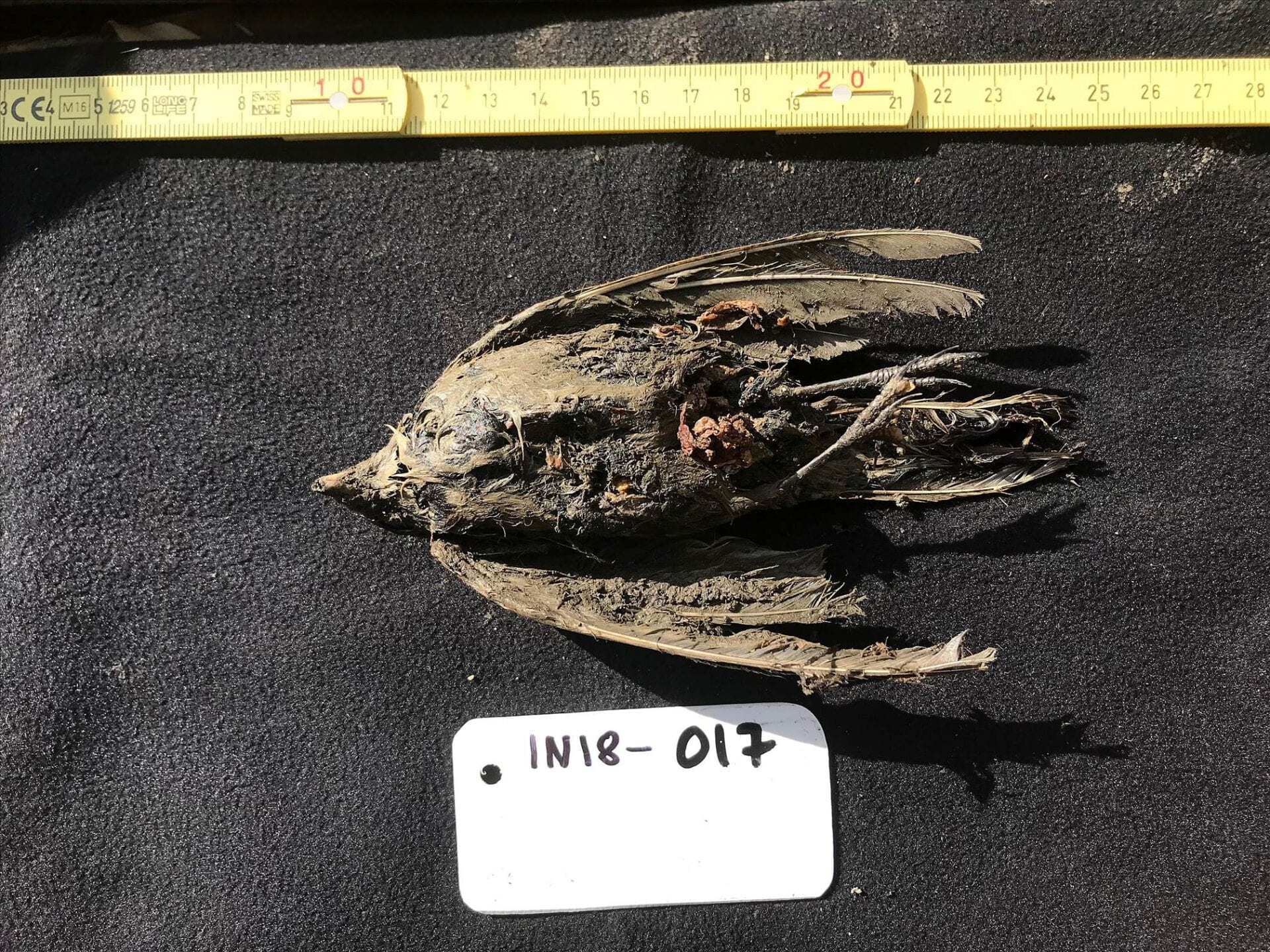Scientists have recovered DNA from a well-preserved horned lark found in Siberian permafrost.
The results can contribute to explaining the evolution of subspecies, as well as how the mammoth steppe transformed into tundra, forest and steppe biomes at the end of the last Ice Age.
In 2018, a well-preserved frozen bird was found in the ground in the Belaya Gora area of north-eastern Siberia. Researchers at the Centre for Palaeogenetics, a new research center at Stockholm University and the Swedish Museum of Natural History, have studied the bird and the results are now published in the scientific journal Communications Biology. The analyses reveal that the bird is a 46000-year-old female horned lark.
“Not only can we identify the bird as a horned lark. The genetic analysis also suggests that the bird belonged to a population that was a joint ancestor of two subspecies of horned lark living today, one in Siberia, and one in the steppe in Mongolia. This helps us understand how the diversity of subspecies evolves,” says Nicolas Dussex, researcher at the Department of Zoology at Stockholm University.
The result has significance on another level as well. During the last Ice Age, the mammoth steppe spread out over northern Europe and Asia. The steppe was home to now extinct species such as the woolly mammoth and the woolly rhinoceros. According to one theory, this ecosystem was a mosaic of habitats such as steppe, tundra and coniferous forest. At the end of the last Ice Age, the mammoth steppe was divided into the biotopes we know today – tundra in the north, taiga in the middle and steppe in the south.
“Our results support this theory since the diversification of the horned lark into these subspecies seems to have happened about at the same time as the mammoth steppe disappeared,” says Love Dalén, Professor at the Swedish Museum of Natural History and research leader at the Centre for Palaeogenetics.
In the slightly longer term the researchers´ ambition is to map the complete genome of the 46000-year-old lark and compare it with the genomes from all subspecies of horned lark.
“The new laboratory facilities and the intellectual environment at the Centre for Palaeogenetics will definitely be helpful in these analyses,” says Love Dalén.
The researchers at the Centre for Palaeogenetics have access to plenty of samples from similar findings from the same site in Siberia, including the 18000-year-old puppy called ”Dogor” which the researchers are studying to determine if it is a wolf or a dog. Other findings include the 50000-year-old cave lion cub “Spartak” and a partially preserved woolly mammoth.
Header Image Credit : Love Dalén







